25 surprising facts about Coca-Cola
Pop quiz
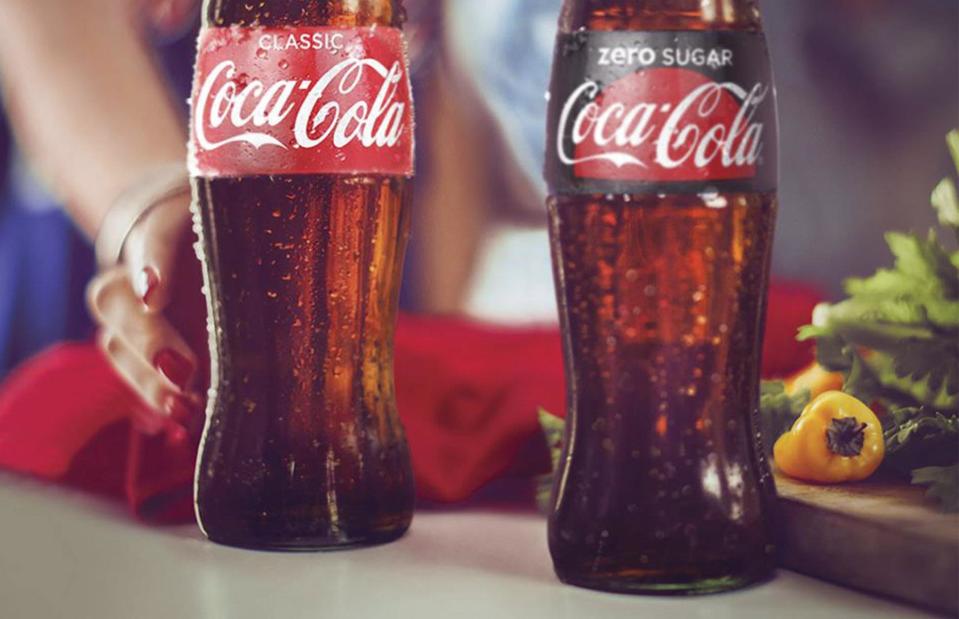
cocacolaGB/Facebook
Coca-Cola is a drink enjoyed all over the globe. But did you know that the first Coke drink was red wine mixed with cocaine? And can you guess which country consumes on average 700 glasses per year? How about the version that tastes like space?
Read on as we reveal Coca-Cola's secrets and some little-known facts.
The recipe isn't as secret as you think
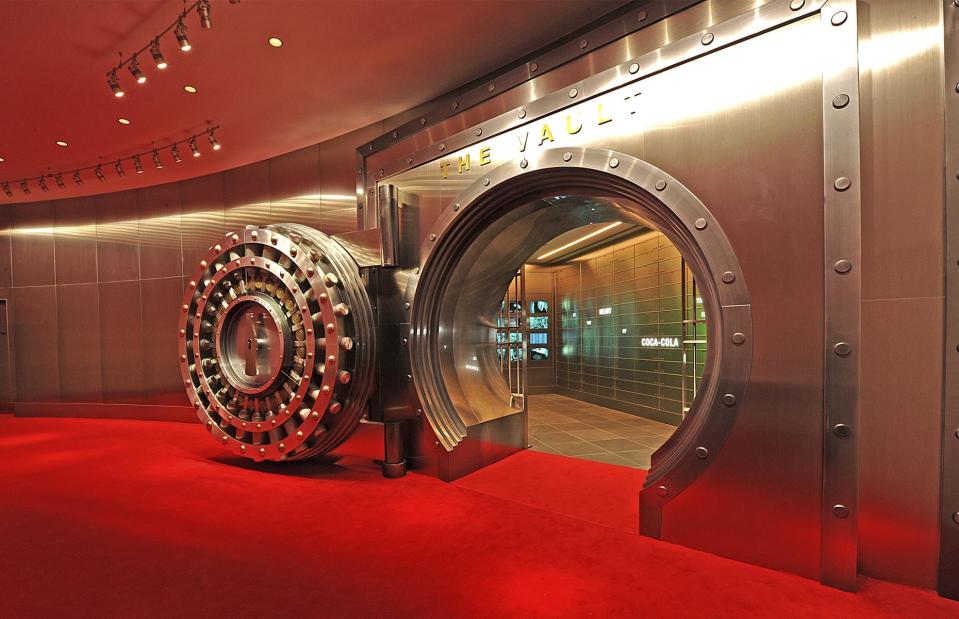
Coca-Cola
Coca-Cola makes a big deal about its recipe being a closely-guarded secret, going as far to say that it’s locked in a high-security vault in Atlanta (pictured). But in 2011, This American Life published what it believed to be the recipe, found in a 130-year-old notebook belonging to the inventor's best friend. The drink's 15 ingredients include cinnamon, neroli, coriander and nutmeg oil. Coca-Cola insisted, if anything, this was an old recipe.
Early Coca-Cola didn’t contain much cocaine
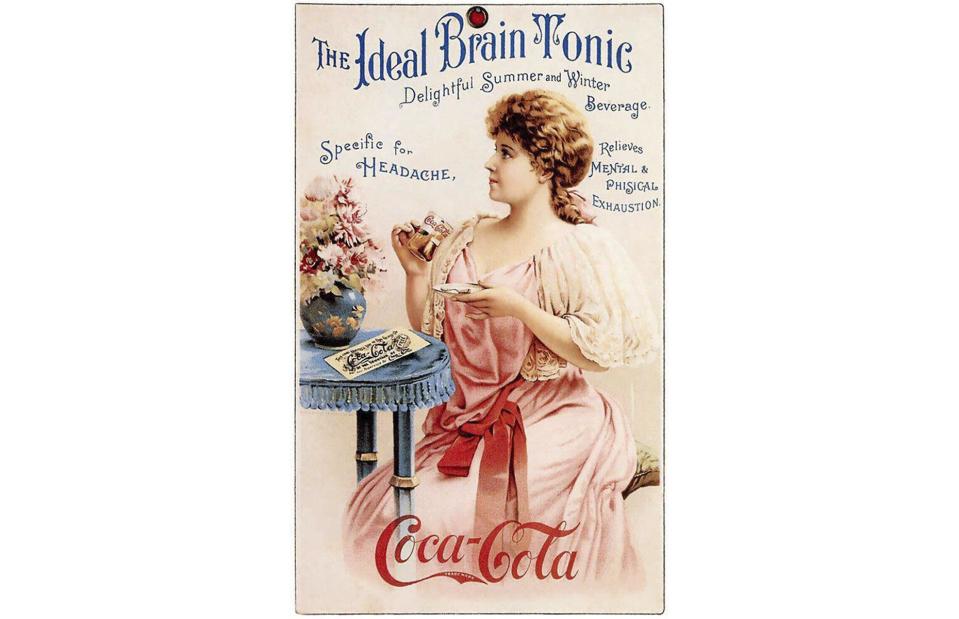
RV1864/Flickr/CC BY-NC-ND 2.0
Invented by pharmacist John Pemberton in 1886, Coca-Cola was originally advertised as a brain tonic to relieve headaches and exhaustion. It contained ingredients from the kola nut, including caffeine, and also cocaine – but not as much as people think. There was only 9 milligrams per glass and it was removed in 1903. Pictured is a vintage Coca-Cola advert from the 1890s.
The first Coke was red wine mixed with cocaine
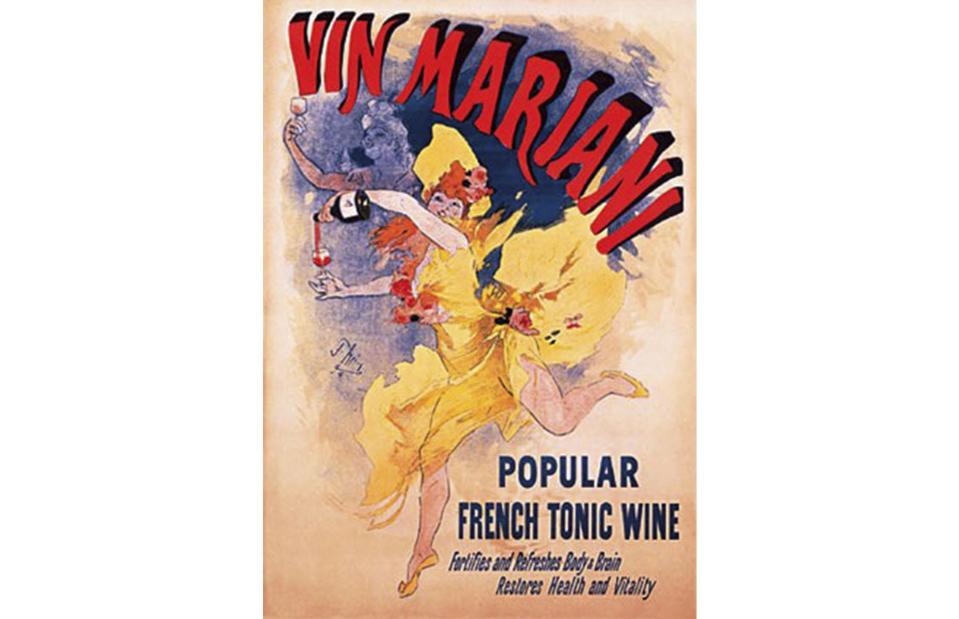
Jules Chéret/Wikimedia Commons/Public Domain US
Pemberton’s inspiration for the drink was a popular concoction called Vin Mariani, invented in France. It was a mixture of Bordeaux red wine and cocaine. This poster pictured here, from 1895, shows how it was marketed as a tonic that "fortifies and refreshes the body and brain". However, the US, especially the Deep South, was in the midst of an anti-alcohol movement. This gave Pemberton the idea of creating a drink for those who were abstinent.
Coca-Cola's name comes from the coca plant and the kola nut
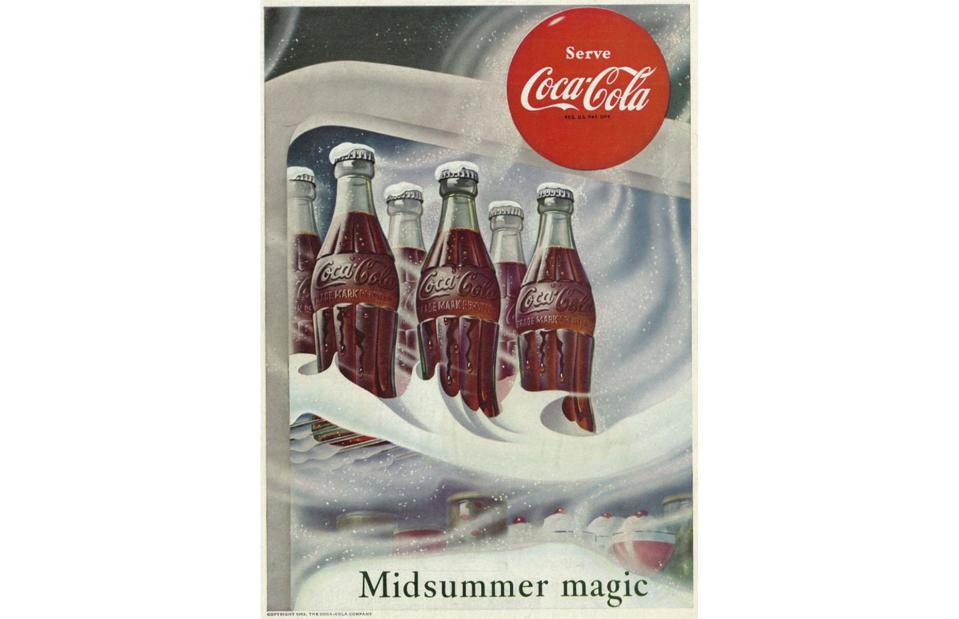
Classic Film/Flickr/CC BY-NC 2.0
The name Coca-Cola was born out of two components of the drink: cocaine which was derived from the coca plant and caffeine from the kola nut (alliteration was deemed to be more marketable). The logo hasn’t changed much since 1886, aside from a few tweaks. The Spencerian font first used is still evident in today’s design – the most noticeable addition was the wavy underline in 1969. This advert was published in Family Circle magazine, in July 1953.
Coca-Cola's success is down to Asa Griggs Candler
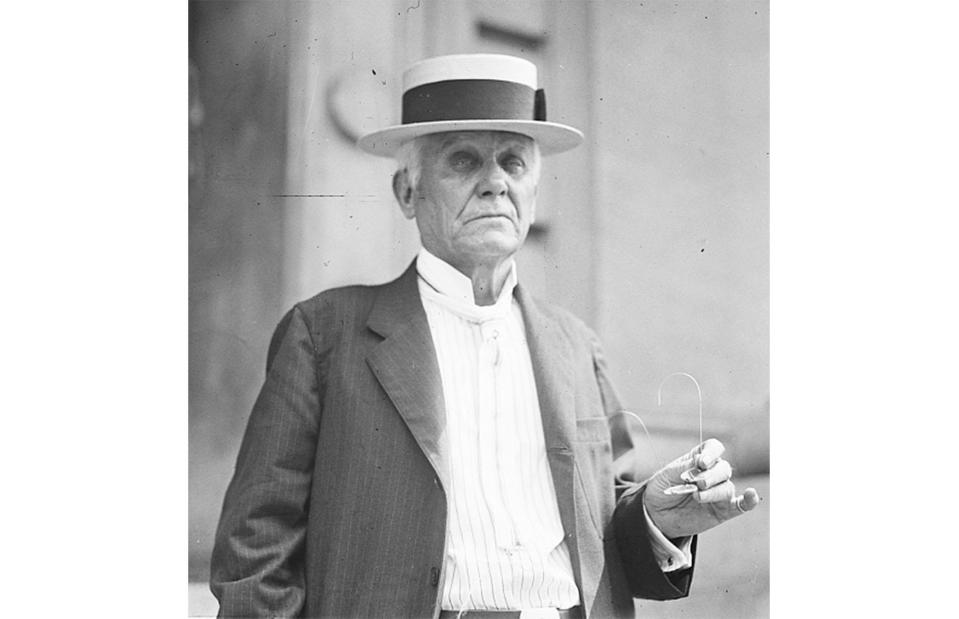
Harris & Ewing/Wikimedia Commons/Public Domain
Despite being invented by John Pemberton, it was actually a businessman called Asa Griggs Candler (pictured) who brought Coca-Cola to the masses. Having bought Coca-Cola from Pemberton in 1888 for $550 (£421), he marketed it aggressively, making millions in return.
Coca-Cola was once given out for free
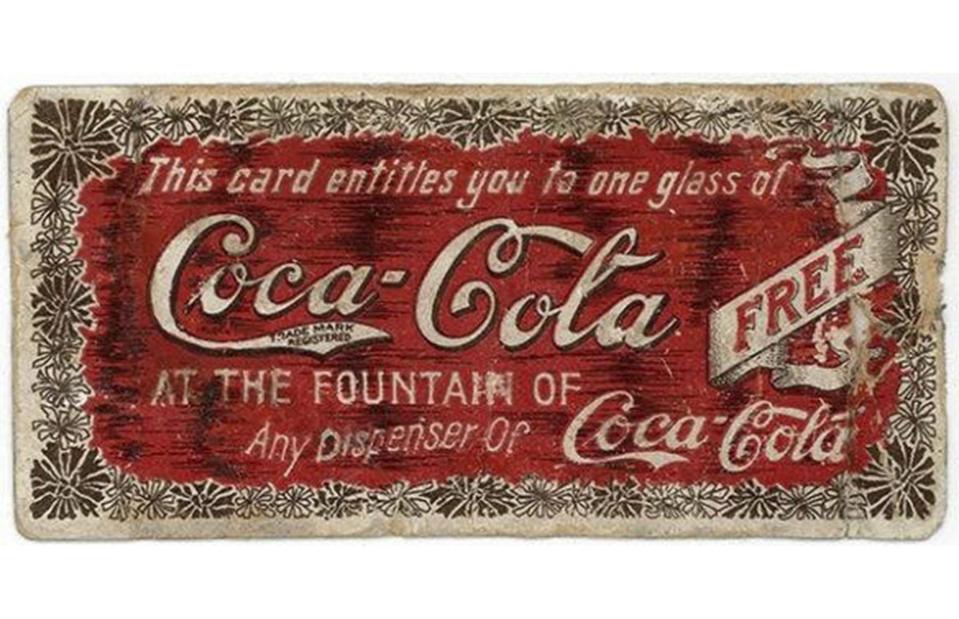
cocacolaGB/Facebook
One of John Pemberton’s earliest marketing efforts was to gift coupons for free samples of Coca-Cola to the Atlantic elite. When Candler took over, sampling was taken up a notch and by the 1890s, Coca-Cola was handing out ‘complimentary tickets’ (pictured) to redeem at soda fountains. Between 1886 and 1913, one in nine Americans received a free sample of Coca-Cola.
Originally, Coca-Cola was only sold on tap
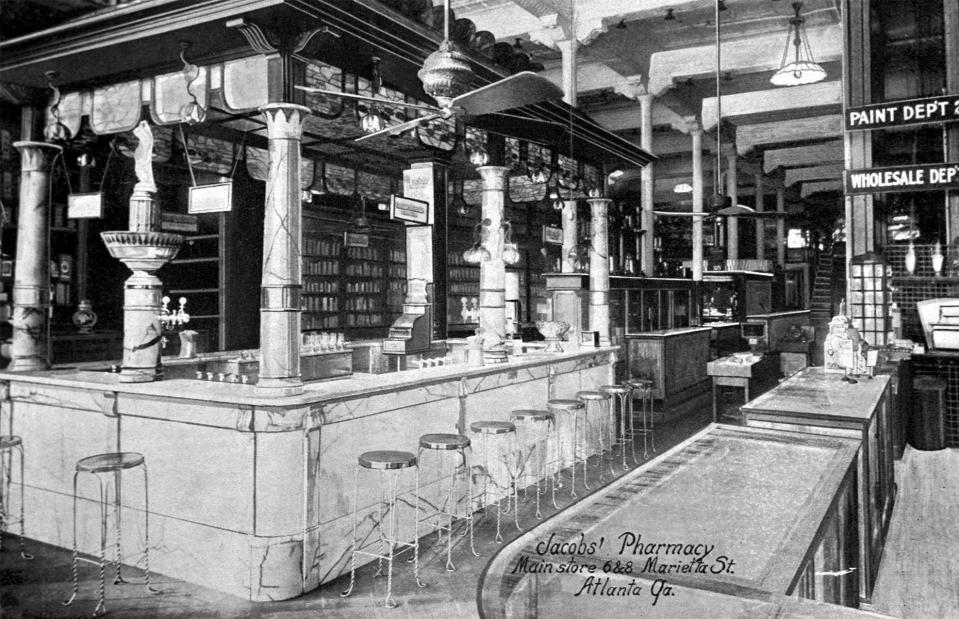
Coca-Cola
When the famous Coca-Cola bottle was first introduced, it was a landmark moment for the brand because it was originally only available from soda fountains. The place pictured is Jacobs' Pharmacy in Atlanta where Coca-Cola was first sold. In 1899, three businessmen – Benjamin Thomas, Joseph Whitehead and John Lupton – bought the rights to bottle Coca-Cola for just $1 (77p).
Bottles were shaped like cocoa beans
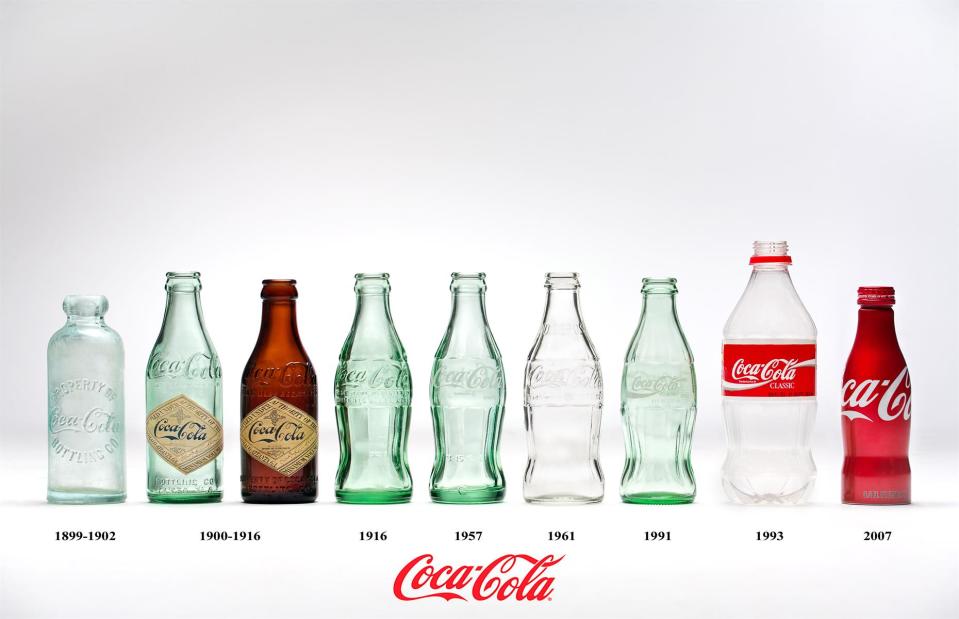
Coca-Cola
In 1915, owner Candler set up a competition to create a bottle design that would distinguish Coca-Cola from its competitors. The winner was The Root Glass Company based in Terre Haute, Indiana. The bottle’s bulbous design was modelled on a cocoa bean – an ingredient incorrectly believed to be in Coca-Cola. This image shows how the bottle's design has changed from 1899 to 2007.
There's an optimum temperature to serve Coca-Cola
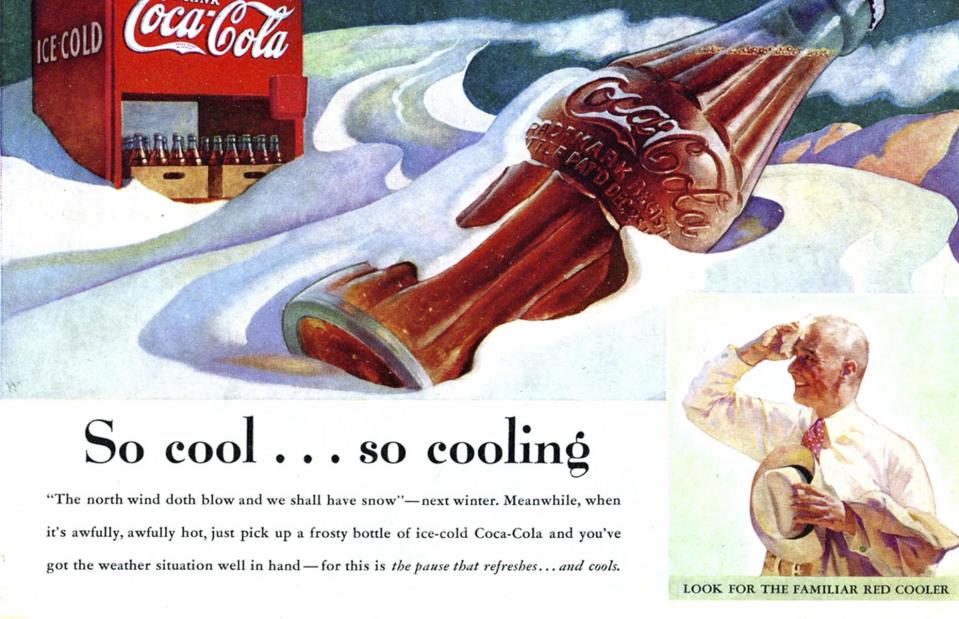
Don O'Brien/Flickr/CC BY 2.0
As part of its marketing strategy to make Coca-Cola seem better than its competitors, the company declared there was a perfect temperature at which the drink should be served: between 1°C and 3.3°C (34°F–38°F). In 1919, it even sent salesmen to new retailers to enforce these standards.
Coca-Cola might have invented multi-packs
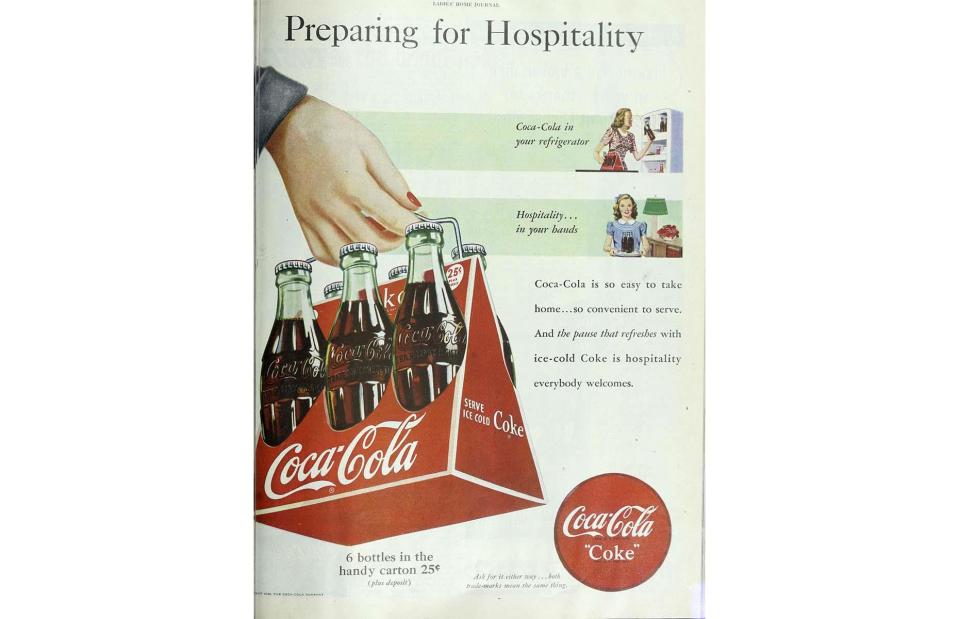
Wyeth N. C./Wikimedia Commons/No Restrictions
Not only was Coca-Cola one of the first brands to devise a modern way of bottling its product, it was also an early adopter of multi-packs. Noticing a trend in shoppers buying more than one bottle at a time, in 1923 it introduced six-packs so consumers could carry multiple glass bottles home without them smashing. This advert was published in The Ladies Home Journal in 1948.
Coca-Cola’s adverts from 90 years ago are still remembered
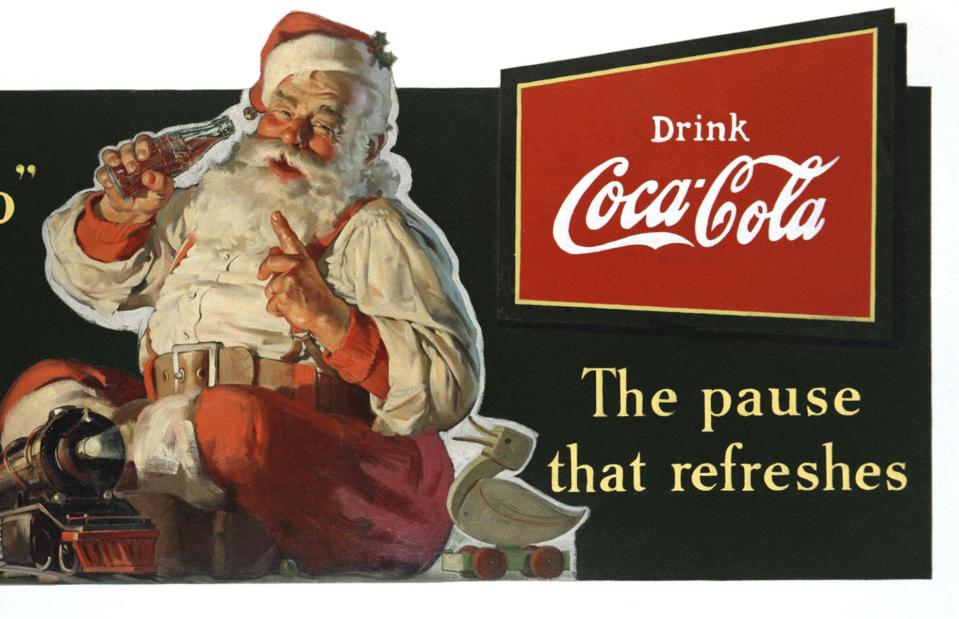
Coca-Cola
With Coca-Cola available nationwide and Prohibition keeping bars closed, it rapidly became an American staple. Advertising only boosted its popularity. The first popular slogan, demonstrated here in a 1936 Christmas advert, was "The pause that refreshes", coined by ad man Archie Lee in 1929. The "pause" is still synonymous with Coca-Cola today.
Coca-Cola was the first Olympic sponsor
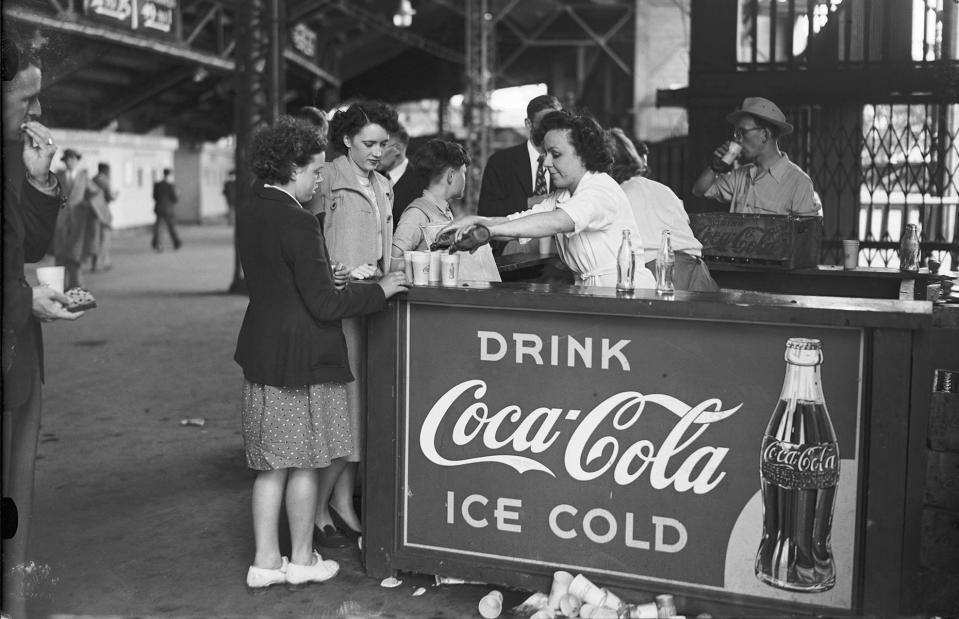
Topical Press Agency/Hulton Archive/Getty Images
Never one to miss an advertising opportunity, Coca-Cola was the first-ever Olympic sponsor, beginning its sponsorship at the Summer Games hosted in Amsterdam in 1928. Pictured is a Coca-Cola stall at Wembley Stadium, London, during the Olympic Games in August 1948.
Coca-Cola didn't completely invent Santa Claus
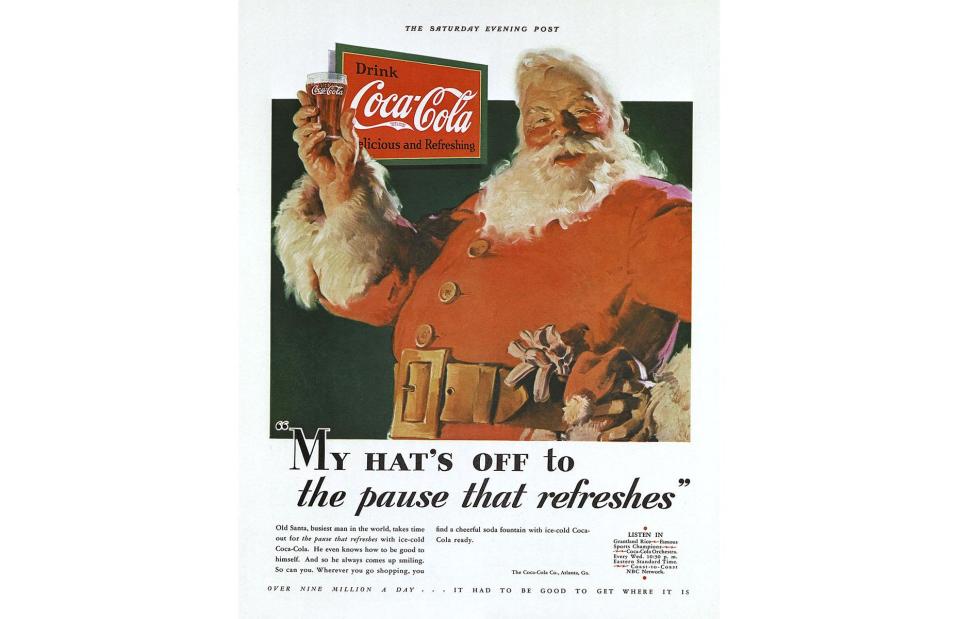
Insomnia Cured Here/Flickr/CC BY-SA 2.0
It’s a common myth Coca-Cola invented the image of Santa Claus as we know it today. Santa had been portrayed as a man dressed in red as early as 1870. However, Christmas adverts, such as this famous 1931 one by artist Haddon Sundblom, did improve his friendly and rosy-cheeked image.
Troops were sent Coca-Cola as a matter of great importance
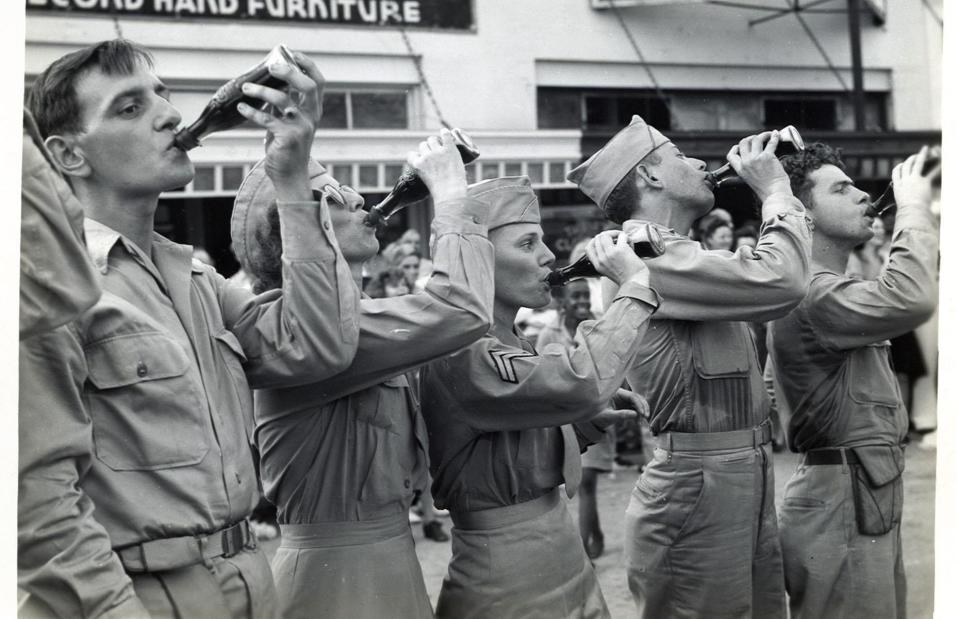
Richard/Flickr/CC BY 2.0
During the Second World War, one of the Coca-Cola leaders Robert Woodruff declared servicemen and women should be able to get a bottle of Coca-Cola for 5 cents wherever they were in the world, no matter what it cost the company. More than five billion bottles of Coke were distributed to US troops. Portable soda fountains were even flown into remote areas in the South Pacific. This photo shows servicemen in Panama City, Florida, circa 1942.
Coca-Cola helped McDonald’s grow
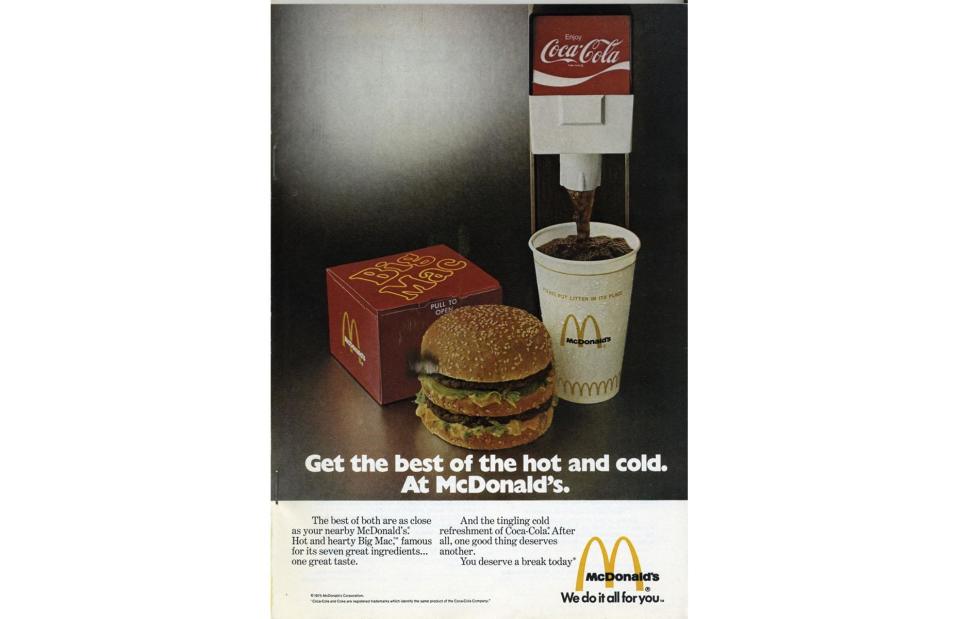
Nesster/Flickr/CC BY 2.0
Looking to become the biggest fast food chain in America, McDonald's chief Ray Kroc approached Coca-Cola in 1955 to create a partnership with the already well-established soft drink brand. One meeting and a handshake later and the pair haven’t looked back. In the early days McDonald’s used Coca-Cola’s offices to get up and running and McDonald’s is now Coca-Cola’s biggest customer. Pictured is a McDonald’s advert from 1975.
Coca-Cola was among the first brands to vary bottle size
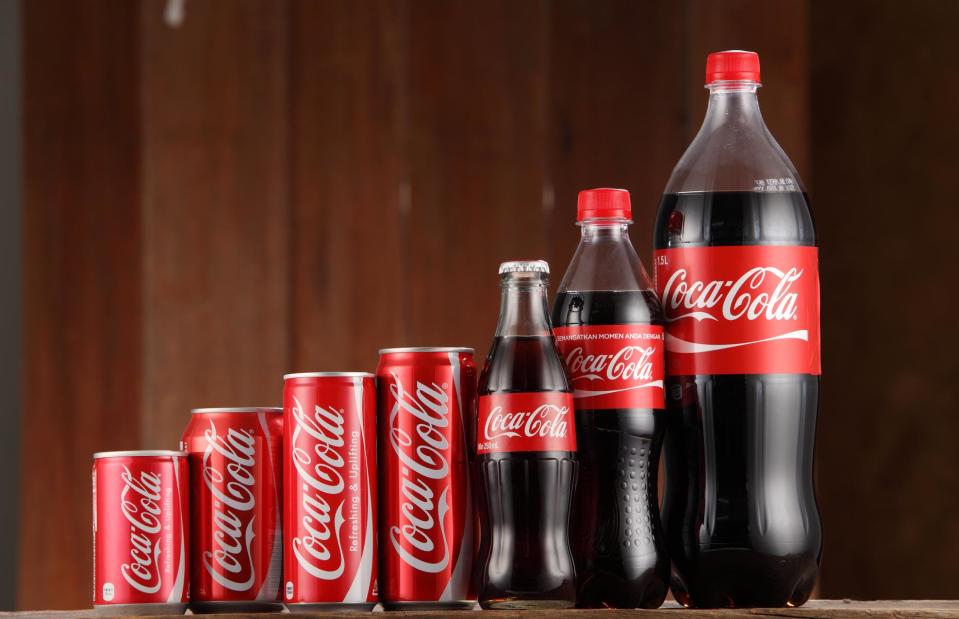
focal point/Shutterstock
Although Pepsi was nowhere near as popular, it was growing and in the 1950s, Coca-Cola decided to diversify to remain relevant. In 1955, it adopted king-size and family-size bottles alongside the original 185ml (6.5oz) drink. It was a scary idea for the business at the time, with one Coca-Cola executive saying "Bringing out another bottle was like being unfaithful to your wife".
Tab still exists and has a cult following
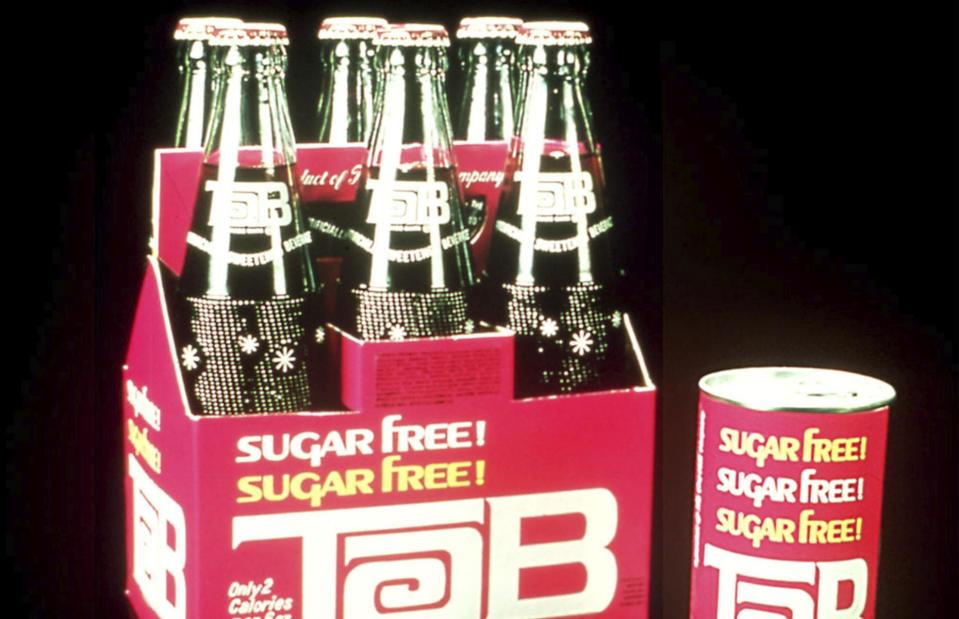
Coca-Cola
Tab (pictured) – with its shiny pink cans and adverts with a bikini-clad Elle Macpherson – came out in 1963 and was Coca-Cola’s first diet soft drink. While Diet Coke was brought out in 1982 and has gone on to be wildly successful, Tab still has a cult following, even though it's harder to find in shops. Apparently, Tab's taste is more enjoyable because it isn’t trying to mimic sugar.
Coca-Cola once tried to replace coffee
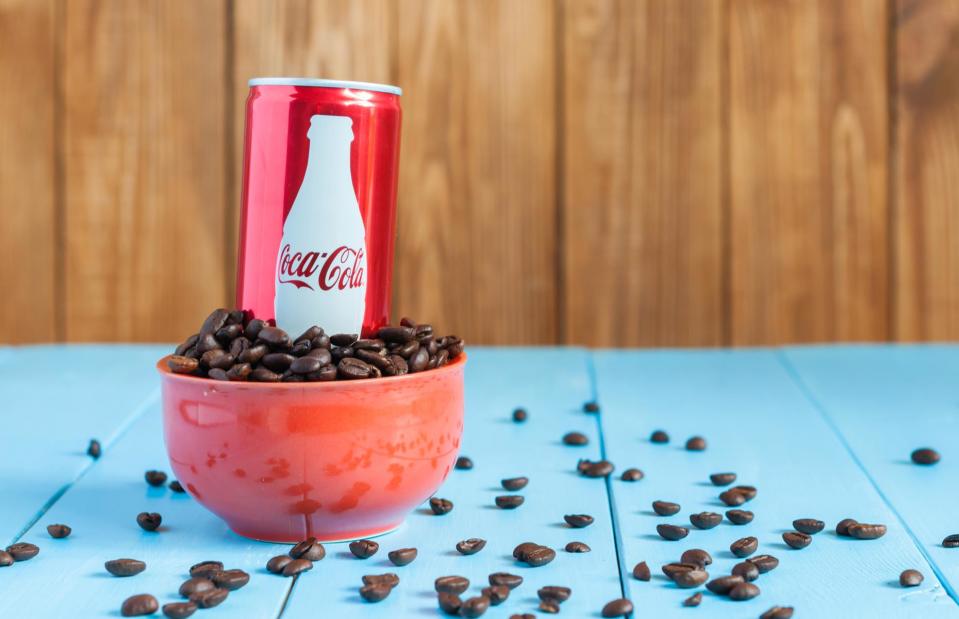
Bychykhin Olexandr/Shutterstock
Fancy Coca-Cola in the morning? In the 1980s, the brand tried to convince people they did. There was a media storm reporting figures that suggested people were swapping their morning coffees for a cool and fizzy caffeine fix. A Los Angeles Times article wrote that only agrarian societies enjoyed hot bitter drinks in the morning. However, the PR campaign failed because people couldn't be persuaded it was normal to wake up with a fizzy drink.
Coca-Cola was the first soft drink to be consumed in space
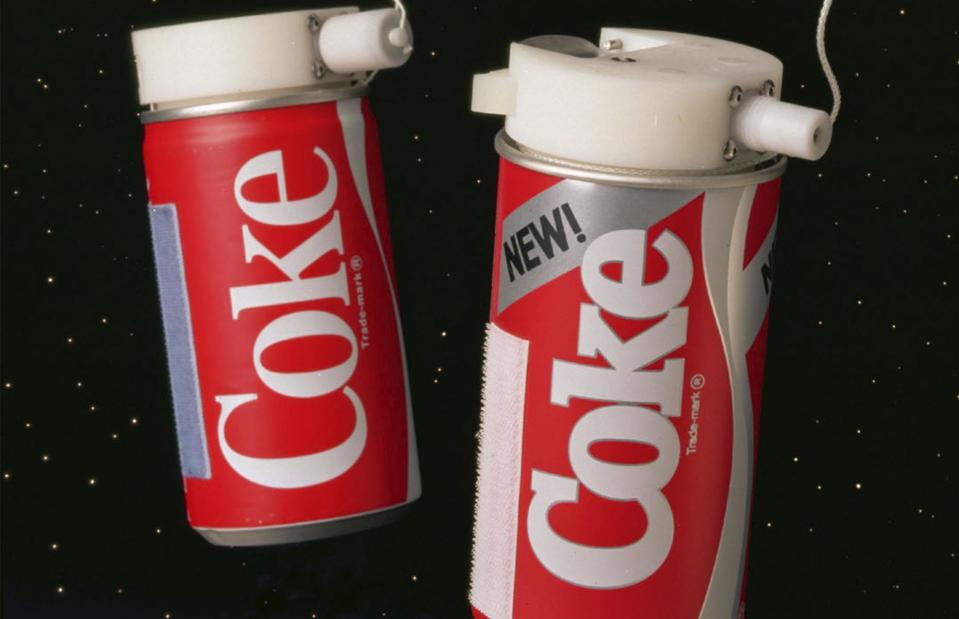
Coca-Cola
The 1980s was a particularly exciting time for the brand, with Coca-Cola becoming the first soft drink to be consumed in space. In 1985, astronauts aboard the Space Shuttle Challenger drank the fizzy drink from special Coca-Cola space cans.
The world's Coca-Cola consumption reaches the moon and back
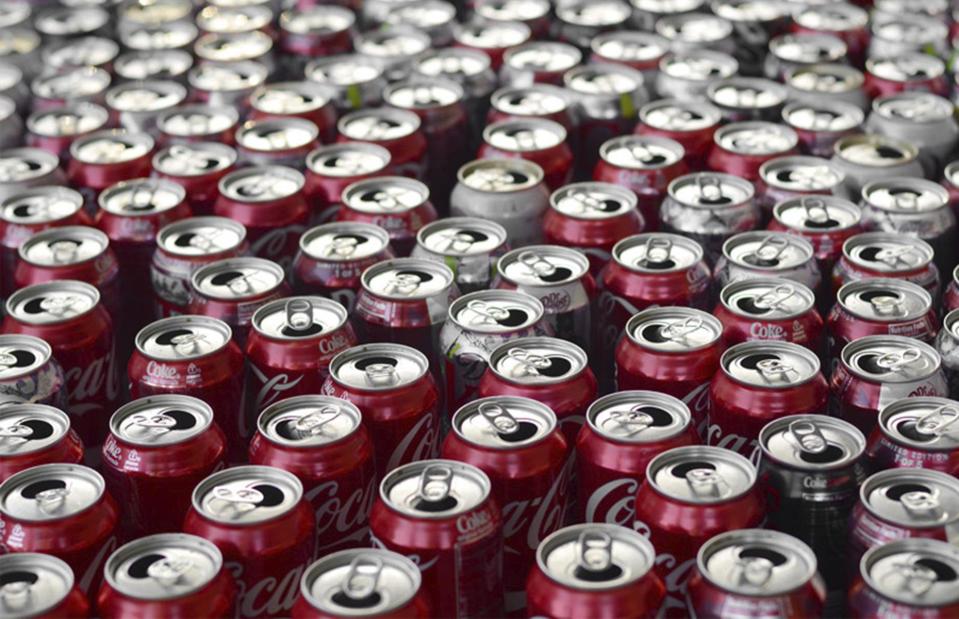
Your Best Digs/Flickr/CC BY 2.0
Coca-Cola is the most widely consumed fizzy drink, so it may not come as a surprise that if you gathered all the Coke bottles ever consumed, it would require an awful lot of space. In fact, if you bottled every drop of Coca-Cola ever produced in 227ml (8oz) bottles and laid them end-to-end, they would reach to the moon and back more than 2,000 times.
It would take you 11 years to try every product
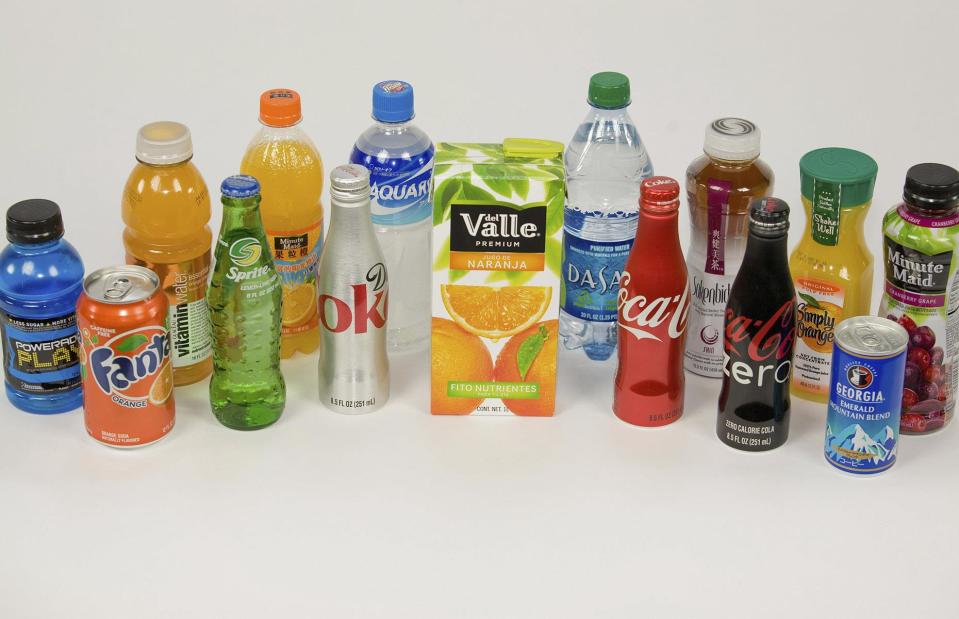
Coca-Cola
The Coca-Cola Company doesn't only sell Coke, it has around 4,000 different drinks across 500 brands. In fact, Coca-Cola makes so many products, if you tried one product from its portfolio every day, it would take you just under 11 years to try them all.
Coca-Cola is a universal language
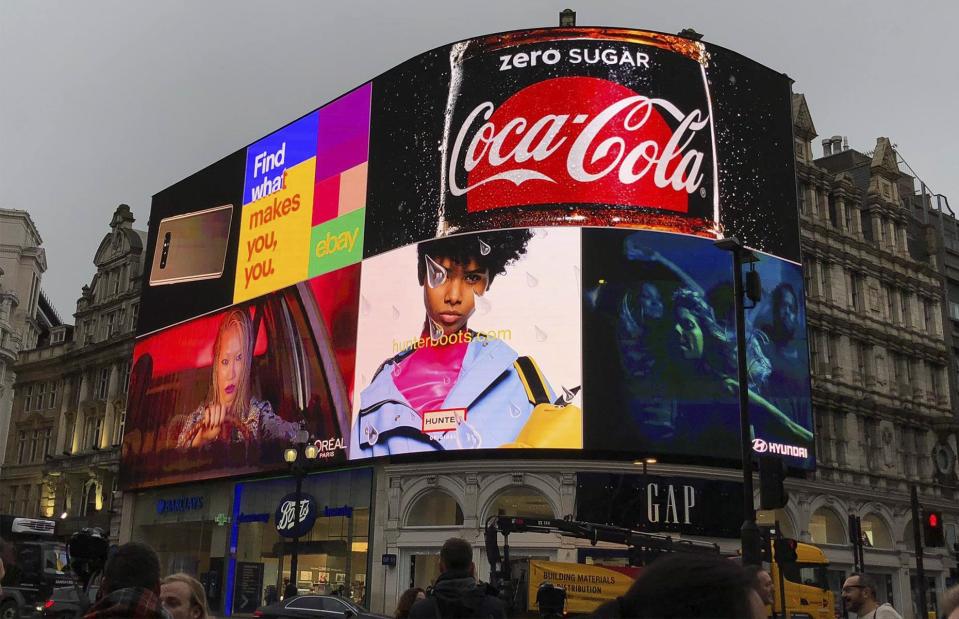
cocacolaGB/Facebook
Coca-Cola claims that its name is the second most-understood term in the world, with more than 94% of people recognising it. The top term is ‘okay’. Equally impressive, the red and white logo is reportedly recognised by more than 90% of the world’s population. Here it is on a billboard in Piccadilly Circus.
The average person drinks a Coca-Cola product every four days
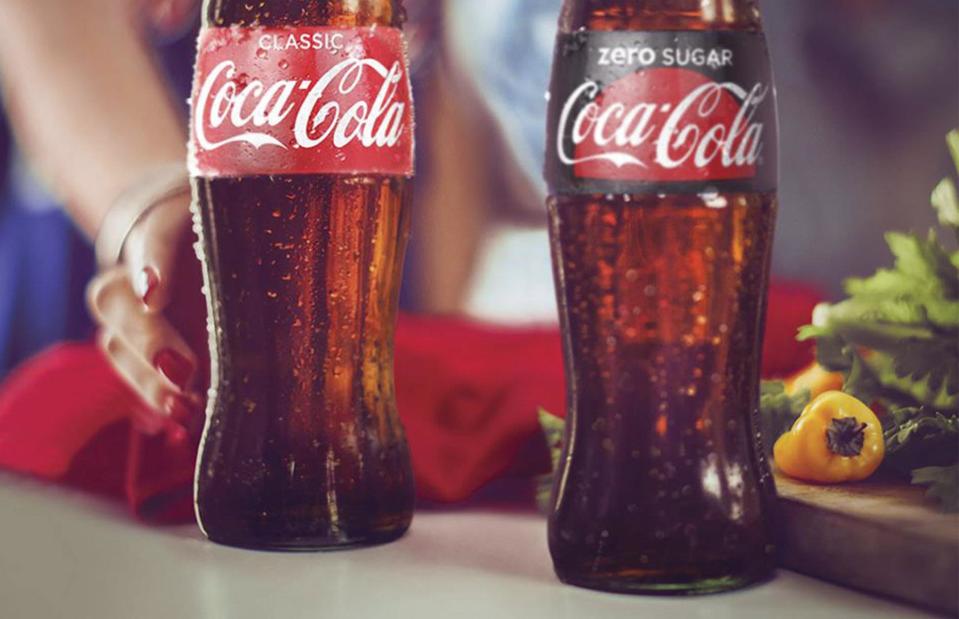
cocacolaGB/Facebook
It isn’t hard to see why Coca-Cola is so well-recognised. It's estimated that the average person around the world drinks a Coca-Cola product – whether that's Coke, Sprite or Fanta – every four days. We truly are a globe of soda addicts.
Coca-Cola is massive in Mexico
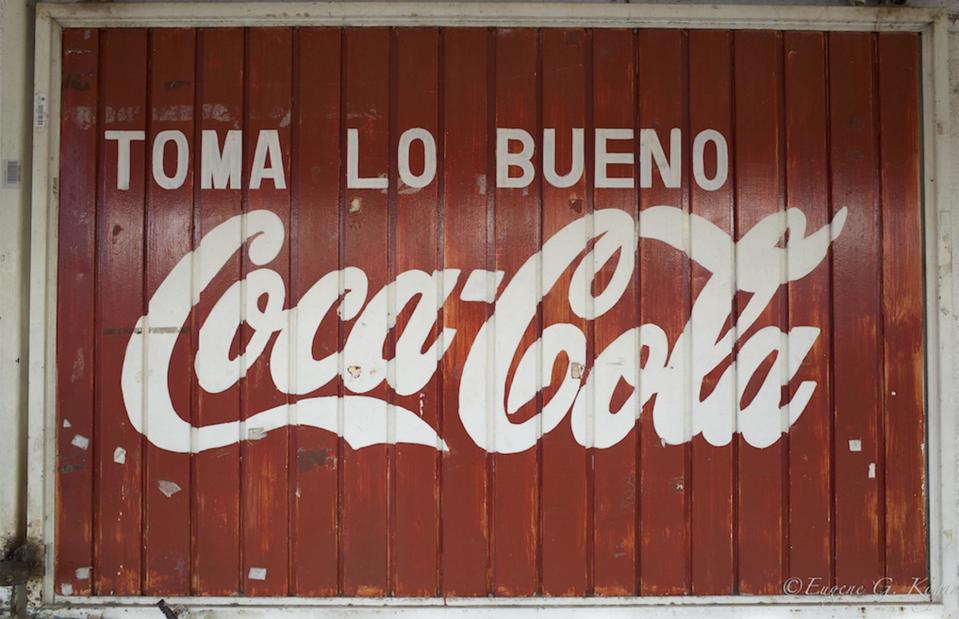
Eugene Kogan/Flickr/CC BY-NC-ND 2.0
Coca-Cola’s largest fan base is in Mexico, where the average person drinks more than 700 servings per year – that’s nearly double what Americans drink. Its popularity began around the same time that Coca-Cola sponsored the Mexico City Olympics and World Cup in the early 1970s.
There's a flavour that tastes like space
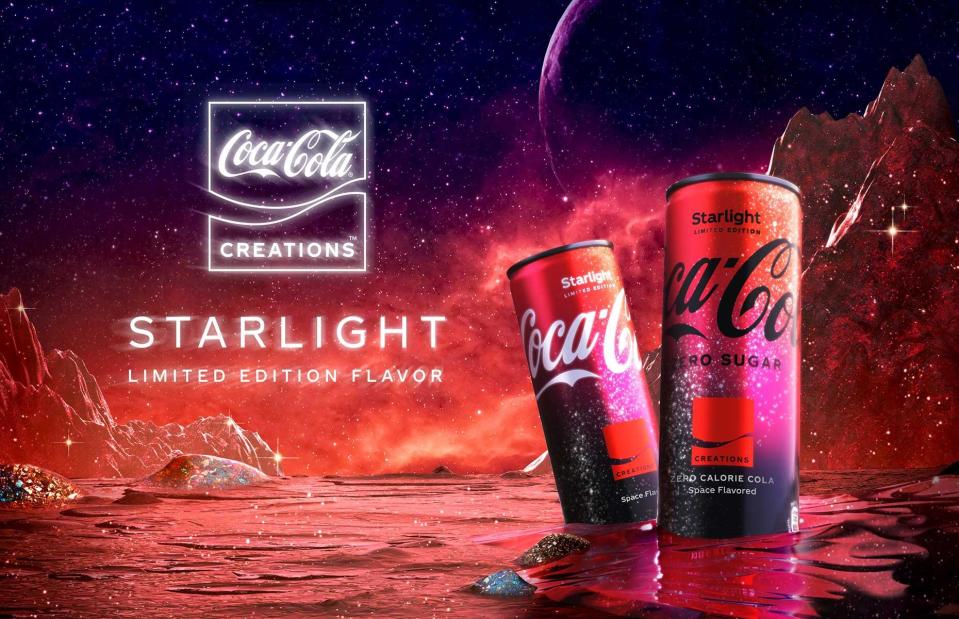
Courtesy of Coca-Cola
Having conquered the world, Coca-Cola set its sights on other galaxies next... sort of. The drinks company launched the space-inspired Coca-Cola Starlight which it says, "combines great Coca-Cola taste with a dash of the unexpected, including a reddish hue. Its taste includes additional notes reminiscent of stargazing around a campfire, as well as a cooling sensation that evokes the feeling of a cold journey to space." The limtied edition drink is available across North America and in select countries globally.


